One of the perks of my job is travelling for research purposes – at least that’s my excuse! My current work-in-progress is a novel set in Poland during World War Two, so in January I booked a trip to Poland, going via Berlin and returning via Dresden. I was so excited! And then the pandemic struck…
I had planned to go the first two weeks of July, but this looked increasingly unlikely. I thought I would have to cancel, but then in a burst of optimism, I rescheduled the trip for August and kept my fingers crossed. Eventually, on 3 August 2020, equipped with a mask and a bottle of sanitiser, I set out from Didcot, travelling by train.
After a stopover in Cologne, I travelled on to Berlin so that I could take a day trip to Fürstenberg and visit Ravensbrück, Himmler’s camp for women in which many female Polish resistance fighters were held.
An hour on the train north from Berlin, Fürstenberg is a small town surrounded by forests and lakes. It’s not the sort of place you expect to find a Nazi concentration camp. However, on the far bank of the Schwedtsee was one of Himmler’s most notorious camps. I won’t attempt to write a history of Ravensbrück in this blog post, but if you’re interested I recommend Sarah Helm’s book If This is a Woman.
It took me about 25 minutes to walk from Fürstenberg train station to the camp, once I’d worked out which way to go. You loop around one side of the lake and take a cobbled path through the forest, passing an old Soviet tank on the way!

There is little left of the blocks which housed the women in lice-ridden, overcrowded squalor. The ground has been covered in black scree which is quite a slog to walk on but which gives a suitably sombre tone. The day I visited was swelteringly hot, but in the winter it would be bitterly cold. The flat landscape offers no protection from the elements and the women’s cotton uniforms would have provided little warmth. In contrast to the blocks where the prisoners lived, the SS lived in chalet-style villas and the female guards lived in comfortable apartment blocks, now converted into a youth hostel.
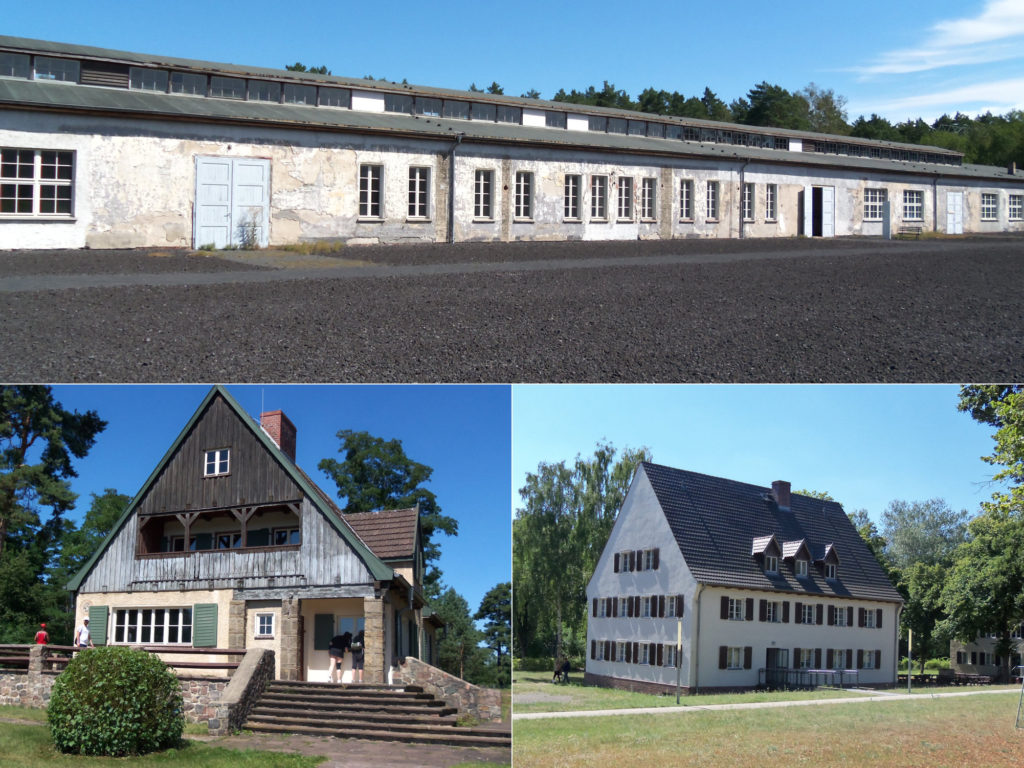
By the lake there are stark and moving memorials to the tens of thousands of women who lived and died here. Less touristed than Auschwitz, Ravensbrück is a good place for solitary reflection of these dark times.

The next day I left Berlin and took the train to Warsaw. This was my first visit to Poland and I was very excited to be going to a country I had read so much about. My hotel was near the Old Town, so I jumped into a taxi, staring wide-eyed as we circled around the Communist-built Palace of Culture and Science. Fortunately the architecture became less in-your-face as the journey proceeded.

Warsaw was almost completely destroyed in World War Two. The first damage occurred during the Siege of Warsaw in September 1939. The almost total destruction of central Warsaw occurred during and after the failed Uprising in 1944. Hitler wanted Warsaw erased from the map. So the post-war reconstruction of Warsaw’s Old Town is quite remarkable. The Old Market Square, below, is a lively hub full of restaurants and cafés.
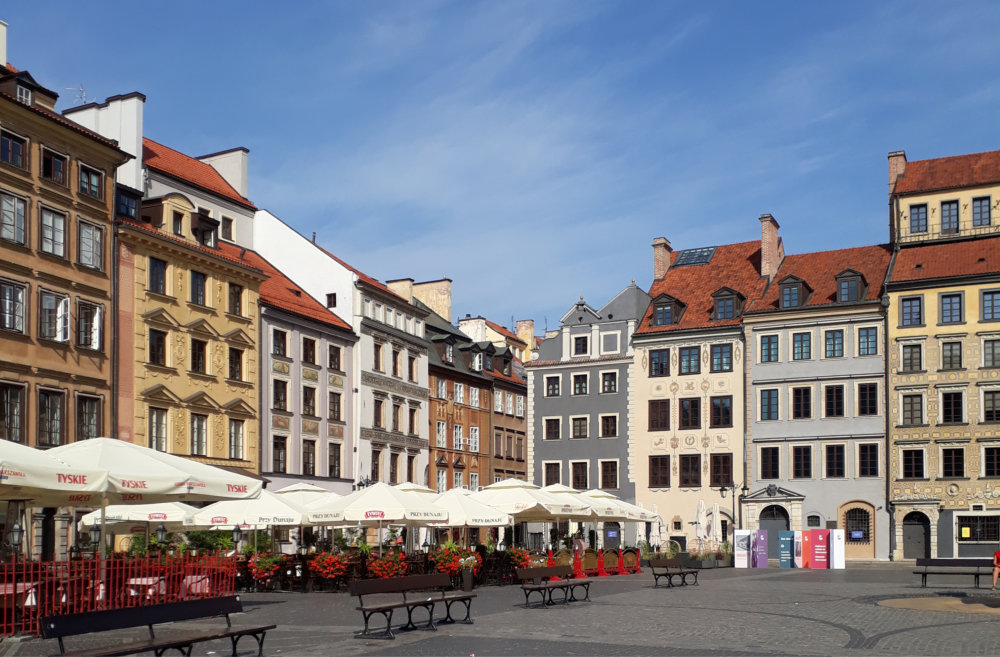
The extent of the reconstruction is particularly noticeable in the Royal Castle which is well worth a visit, and much less crowded than Wawel Castle in Kraków.
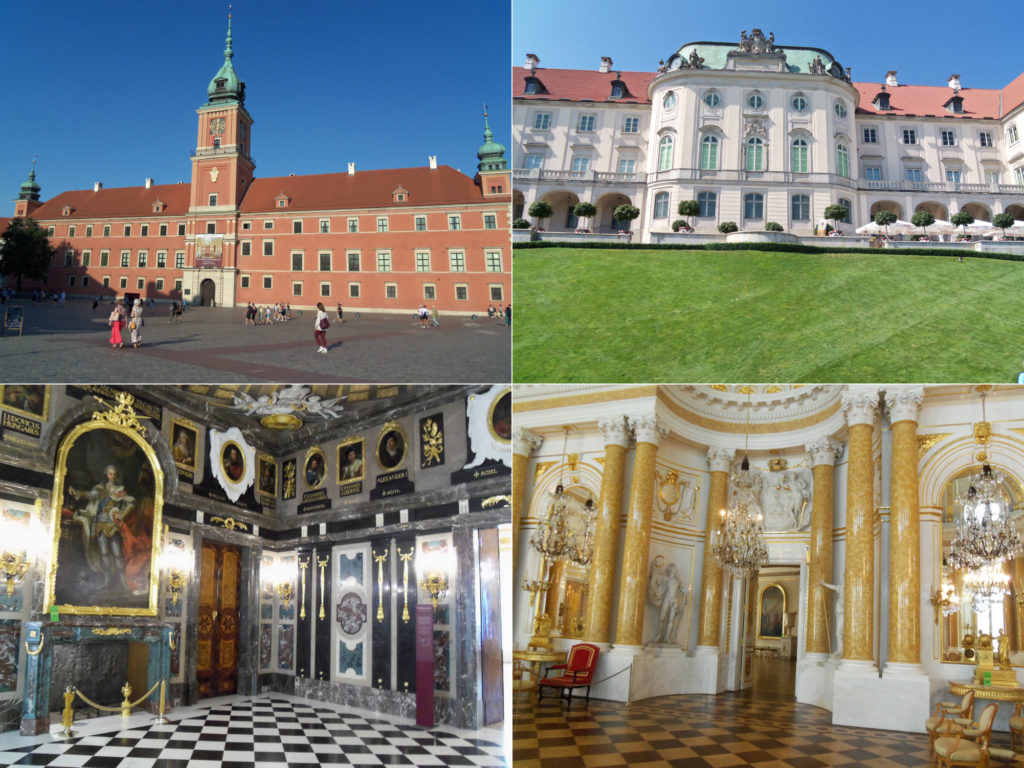
 Of course, I wasn’t in Warsaw just to swoon over Renaissance and Baroque architecture. My main interest was the Warsaw of the Second World War, and especially the Uprising of 1944. Again, I’m not going to attempt a history of the Uprising in this blog post, but I recommend Norman Davies’ Rising ’44 if you’re interested.
Of course, I wasn’t in Warsaw just to swoon over Renaissance and Baroque architecture. My main interest was the Warsaw of the Second World War, and especially the Uprising of 1944. Again, I’m not going to attempt a history of the Uprising in this blog post, but I recommend Norman Davies’ Rising ’44 if you’re interested.
You don’t have to go far in Warsaw to find memorials to the Uprising. They are dotted around the city, often just a plaque, some flowers and a lighted lamp. The main Uprising Memorial comprises a dramatic set of statues close to the Krasińskich Gardens and Palace. These larger than life figures capture the bravery of the resistance fighters who tried to defeat the Germans whilst the Soviets idled on the opposite bank of the Vistula River.
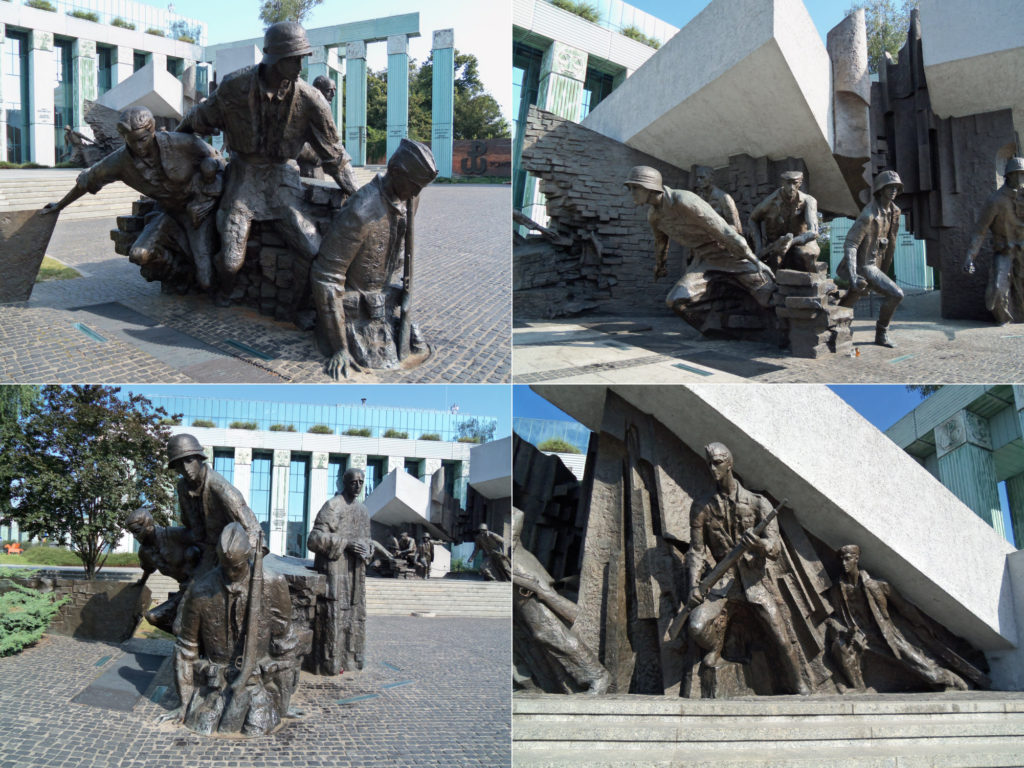
The area of Warsaw which comprised the Warsaw Ghetto is now completely rebuilt, but a memorial remains at the site of the Umschlagplatz where thousands of Jews were herded into cattle trucks for their final journey to the death camp at Treblinka. The Pawiak Prison, also formerly in the Ghetto, remains, but was closed due to the pandemic.

What struck me most about Warsaw was how pleasant it was. It’s not overwhelming like so many capital cities. And there are beautiful parks and gardens throughout the city where you can relax. I was grateful for a sit down in the Krasińskich Gardens after a morning walking around in the 30-degree heat.
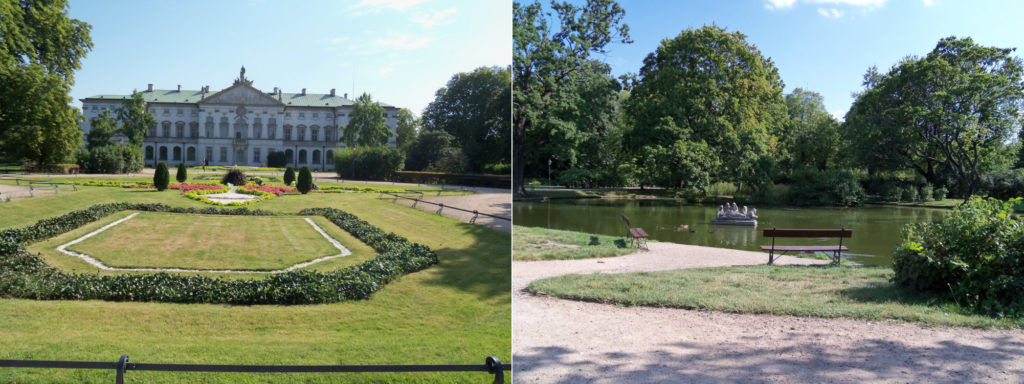
After three days in Warsaw it was time to move on to Kraków, widely regarded as the jewel in Poland’s crown. Unfortunately I didn’t arrive in the best of humour after a delayed journey in an old-fashioned train carriage (with a corridor) where eight of us were packed into the compartment with no air-conditioning, perspiring in our face masks. But once I’d checked into my hotel and ventured out, the stunning architecture soon lifted my mood.
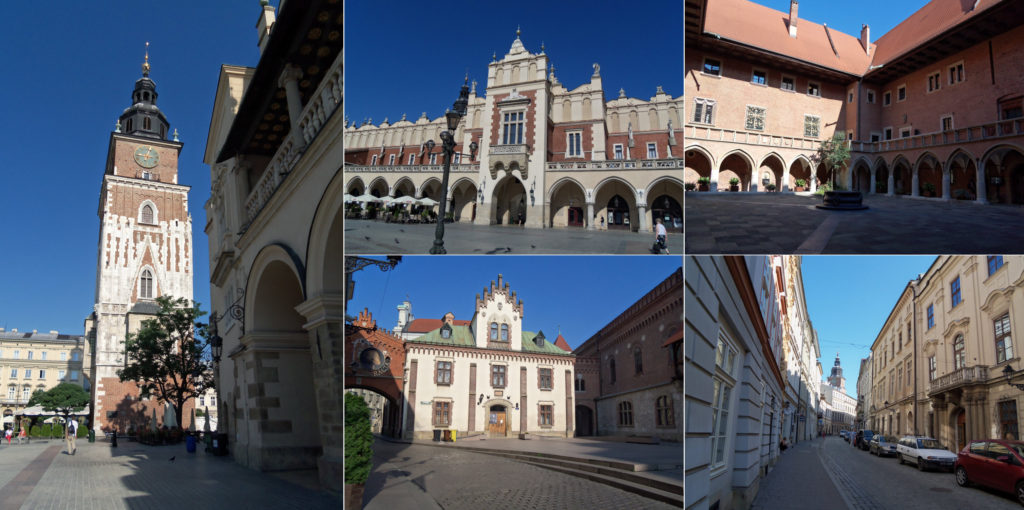
The former capital of Poland, Kraków had that dubious honour again during World War Two when Nazi governor Hans Frank ruled over the General Government (Nazi-occupied Poland) from the splendour of Wawel Castle. Due to the high number of visitors to Wawel and the need to book in advance I had to content myself with mainly viewing the castle from the outside.
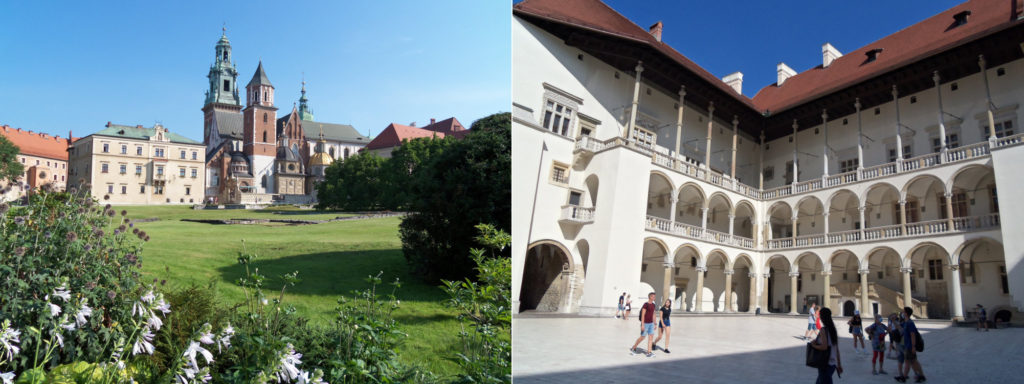
Venturing across the Vistula River on the tram, I discovered Oskar Schindler’s Enamel Factory which is now an outstanding museum devoted to the German occupation of Kraków.

On my last day in Kraków I visited the Czartoryski Museum which just happened to be right next door to my hotel, and I had the rare good fortune to spend a few minutes alone in a room with Leonardo Da Vinci’s Lady With an Ermine. During World War II Hans Frank acquired this painting for himself and hung it in Wawel Castle. It’s a wonder it survived the war.

After Kraków, the next stop was Wrocław, formerly the German city of Breslau but ceded to Poland after World War II. If Warsaw was the most interesting in terms of sites and Kraków was the most splendid architecturally, then Wrocław was the loveliest city in which to relax. Straddling the River Oder, Wrocław is a delightful place to just wander around. Pictured here is the Market Square and the elaborately gothic Old Town Hall.
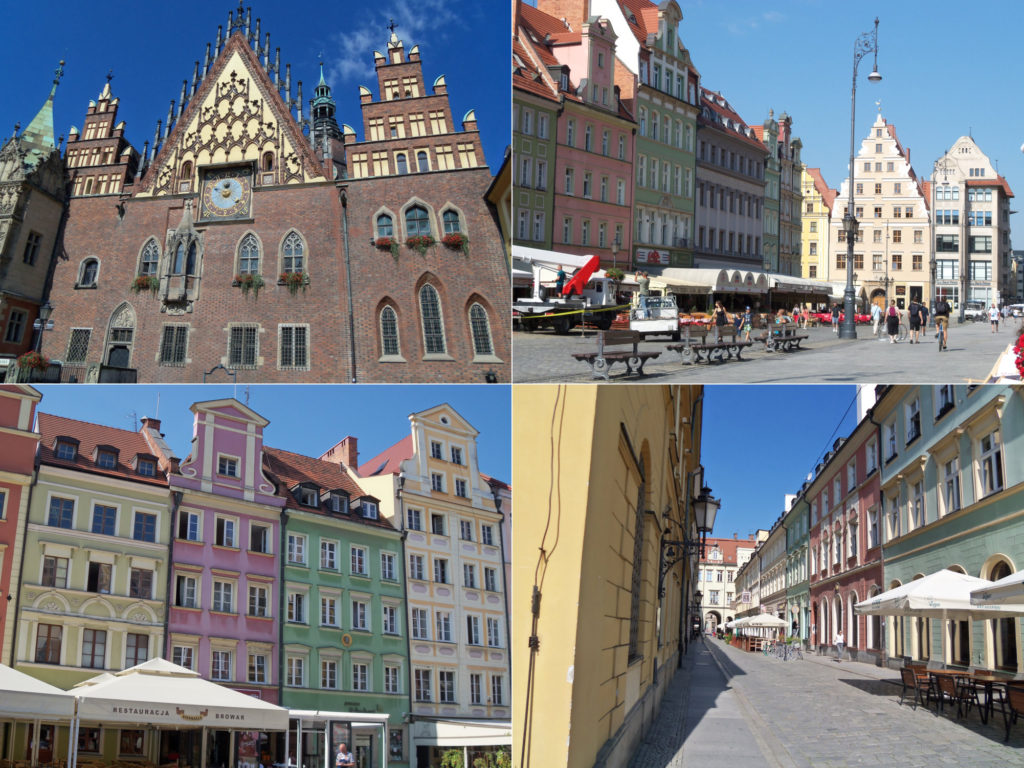
A short walk over the river takes you to Cathedral Island which I had practically to myself first thing in the morning.
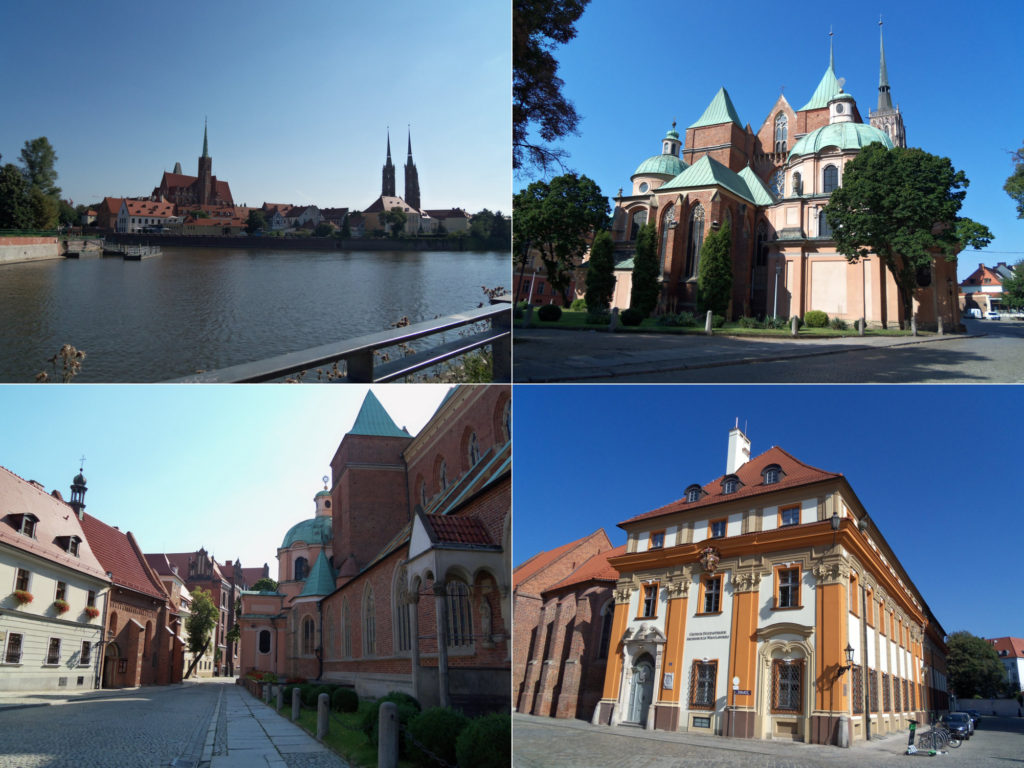
And just when I was feeling in need of another dose of Baroque excess, Wrocław University came to the rescue. You can’t overdo the Baroque.

The views from the top of the Mathematical Tower were worth the climb.
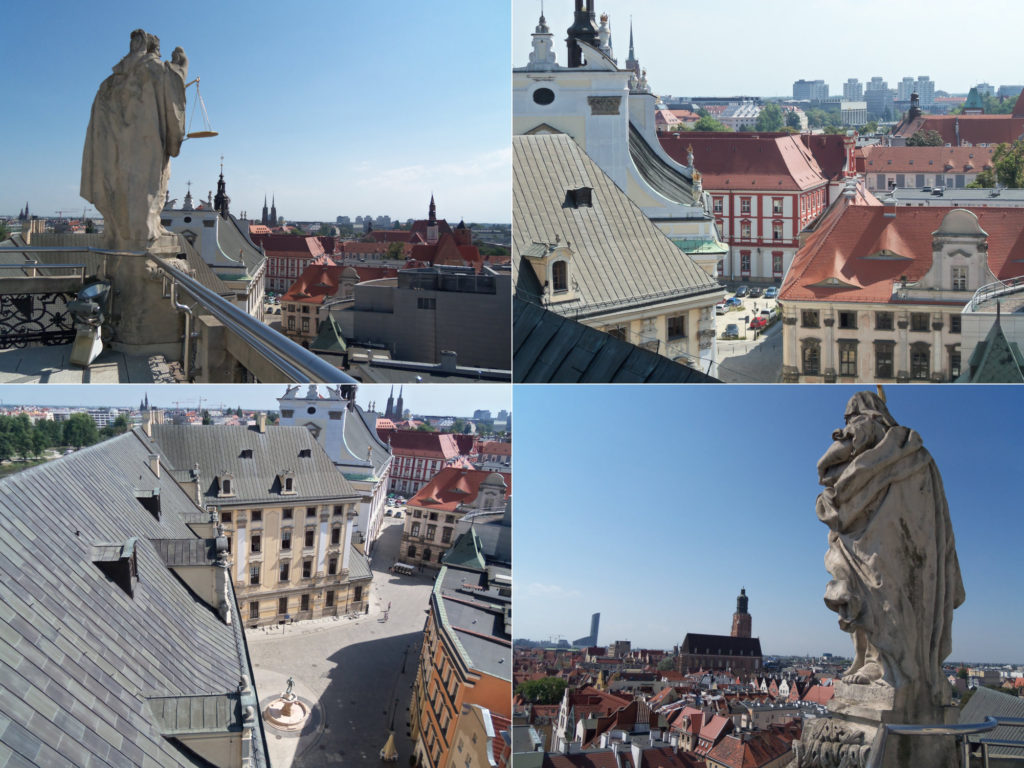
It was finally time to leave Poland and return to Germany. Dresden was a place I’d wanted to visit for a while. Bombed to rubble by the British in the final days of the war, Dresden, like Warsaw, has undergone a remarkable reconstruction. I have to admit that by this time I was fairly exhausted and had seen enough palace interiors and art galleries, so I probably didn’t do Dresden’s treasures justice. Nevertheless, I thoroughly enjoyed myself wandering around the streets of the Old Town and The New Town.

I travelled home via Leipzig, Frankfurt and Brussels and, as a result of my incursion into Belgium, had to spend the next two weeks at home in quarantine. Nevertheless, the trip was worth it and I’m just incredibly grateful that I was able to go at all during this difficult year.